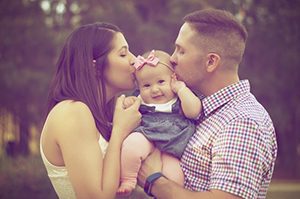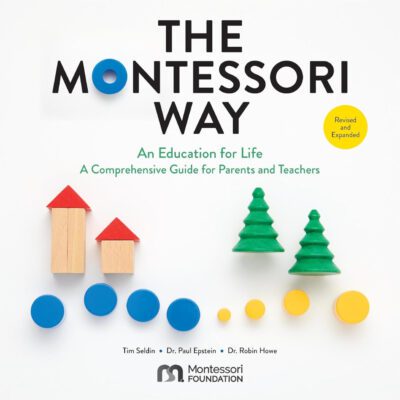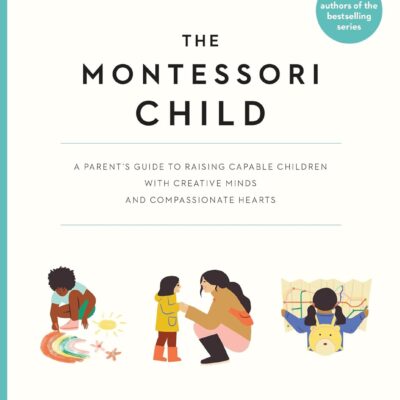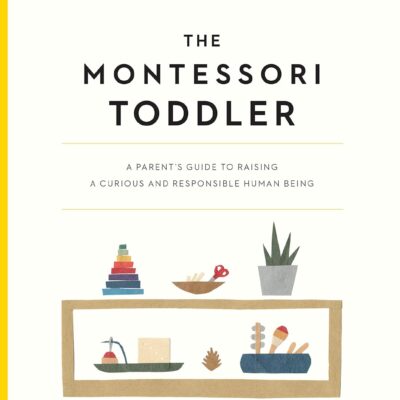 Note: This article is an excerpt from The Montessori Way by Tim Seldin and Paul Epstein, PhD. This book is available through our store.
Note: This article is an excerpt from The Montessori Way by Tim Seldin and Paul Epstein, PhD. This book is available through our store.
The Best Beginning There is an ironic prejudice about education found in almost every country: the older the students are that one teaches, the higher the pay and respect the teacher receives. We take it for granted that a professor in a graduate school is a more prestigious position than that of a high school teacher, which is, in turn, considered a more sophisticated position than teaching elementary and, of course, both are far more respectable than that of a nursery-school teacher. And no one in his or her right mind would want to teach infants and toddlers, right? Yet research clearly shows that the most important period in a human being’s educational and emotional development are not the years of high school and college but rather the first six years of life.
Human beings are a magical combination of at least three factors: our genetic inheritance, our biological development, and our experiences.
Genetics play an enormous role. In addition to the more obvious issues such as our sex, eventual height, and the color of our eyes, genetics determine our special gifts and handicaps, predispositions, and many aspects of our interests, talents, and personalities that scientists are only now beginning to understand. However, whatever potential or predispositions we inherit from our parents, they will only be developed if our bodies are allowed to develop normally.
A child who is malnourished in the critical first six years of life, or who suffers a devastating disease or physical injury, will normally develop much less of his or her potential as a human being than one who enjoys good health. Equally important, and most relevant to this book, is the question of the child’s early education.
Of course, the brain is not a muscle, but like a muscle, the brain only develops through active use.This is especially true in the years of infancy and early childhood.
In the past, many people pictured a child’s mind as a blank slate on which adults, through instruction, could “write down ”the content of a good education. Likewise, another common metaphor was that of an empty bowl, waiting to be filled with the contents of the school’s curricula. Montessori demonstrated that both concepts are inaccurate.
The young child’s mind is more like that of an acute observer or scientist, eager to learn, explore, try new things, and master new skills. But most importantly, she recognized that with stimulation, the child’s ability to concentrate, absorb, and master new ideas and skills increase, and that the earlier we begin a program of intellectual, physical, sensory, and artistic education, the more dramatic the result.
This is a time of great sensitivity to language, spatial relationships, music, art, social graces, and so much more. If, during this period, the mind is stimulated by the child’s exposure to a rich environment, the brain will literally develop a much stronger and lasting ability to learn and accomplish. In short, while our culture may believe that preschool teachers are the least significant educators our children will encounter, in reality the contribution that they offer is of incredible importance in a child’s education.
This is especially true of those who teach infants and toddlers. So please forgive us when we cannot hide our frustration when parents say things like,“ Oh, for goodness sake, my child is just in preschool! Education during these years is not all that important! All she needs are teachers who are warm and kind.”
The concept of a specific program for these very young children was developed by Adele Costa Gnocchi and Dr. Silvana Quattrocchi Montanaro at the Centro Educazione Montessori in Rome.
This world-famous teacher education program awards the Association Montessori Internationale’s Assistants to Infancy Certification, preparing Montessori educators to work with children from birth through age three. Over the last twenty years, other Montessori programs have developed infant-toddler teacher education programs of their own.
Infant-toddler Montessori educators are passionate about their work. Inspiring teacher educators Celma and Desmond Perry, Virginia Varga, and Carole Korngold have tirelessly advocated the importance of these programs and are slowly beginning to convince Montessori schools around the world to develop them.
Why don’t more schools offer infant-toddler programs? Montessori programs for children under age three are not quite as rare as hen’s teeth; however, maybe they are anything but common. Toddler classes are still fairly few and far between, and infant programs are still so uncommon that parents would be fortunate to find one in their community.Where infant and toddler programs do exist, they tend to be extraordinarily popular, and it may be quite difficult to find an opening unless parents begin their search a year or more in advance.Why don’t more schools offer infant-toddler programs?
Why don’t more schools offer infant-toddler programs? Basically, there are three major reasons.
- The first is that there are very few certified Infant-Toddler Montessori teachers.
- Secondly, because only a handful of children are supporting the trained teaching staff and classroom, these programs are more expensive to run than the classes for three to six- year-olds, and few schools feel that they can ask parents to pay the true cost of operation. As a result, many schools lose money on this type of program. The compensation is that the children who come through these programs will be among their very best students in the years to come because of their early start. In some cases, state regulations may prohibit schools from accepting children under age three. Similarly, in some states, operating a program at this age level may cause the school to be classified as a child-care center, rather than as an educational institution.
- And finally, many Montessori administrators wrestle with the concern that if they accept children under age three, prospective parents will view the school as a day-care center, rather than as a school, which some administrators fear might cause their entire program to lose credibility.
Parent-Infant Programs: These are primarily programs designed to educate the parent of very young children in child development and the Montessori strategies for helping parents to respond to the needs they observe in their infants. These programs give parents an opportunity to observe their children and, through discussion, learn how they can best respond to their babies’needs. Normally,parent-infant programs will accept children under eighteen months of age. Parents come with their children to a short class, normally lasting about ninety minutes, held once a week. Often, there will be a parent-teacher discussion held at another time during the week. Topics always include parent questions and concerns and a weekly topic, such as sleep, nutrition, home environment, and infant and toddler development.
Here are some suggestions for incorporating Montessori into your life with your baby.
- Get yourself and your materials ready before interacting with your infant. So, for feeding, have the food prepared and in the serving bowl, for diapering have the diapers, cream, wipes, etc. right at hand in the changing area, for bathing have the soap, washcloth, towel, bath water, and clothing in the area where you will bathe your infant. This allows you to give your full attention to the infant without stopping to look for what you need while the baby waits.
- Look at what your baby is doing. Just because you are ready to change the diaper, it does not necessarily mean that your baby is. If your baby is engaged in play, do not interrupt.
- Tell your infant what you are about to do. Just say, “It’s time to change your diaper, but I see that you’re not ready yet.” Then wait a couple of minutes. Go back and say, “Now you look ready.” At first, your infant will not understand your words but as you continue to use this process your infant will begin to recognize your tone of voice and body language.
- Talk with your infant about everything that you are doing. As you begin to prepare your infant for the diapering activity, gently take away objects or toys and tell your infant what you are doing. Then say, “I am going to pick you up so that we can change your diaper.” After you say that – PAUSE. The pause gives your infant time to take in what you’ve said and then to cooperate with your efforts. This will begin to develop two-way communications and eventually conversations.
- Explain everything you are doing and show your infant the steps involved. While you are diapering, let your infant watch and listen so that your infant can be- come a part of the activity. Given the opportunity, your infant will make eye contact, study your face, vocalize, initiate play and follow your actions. This will make for a delightful experience for both your infant and you.








